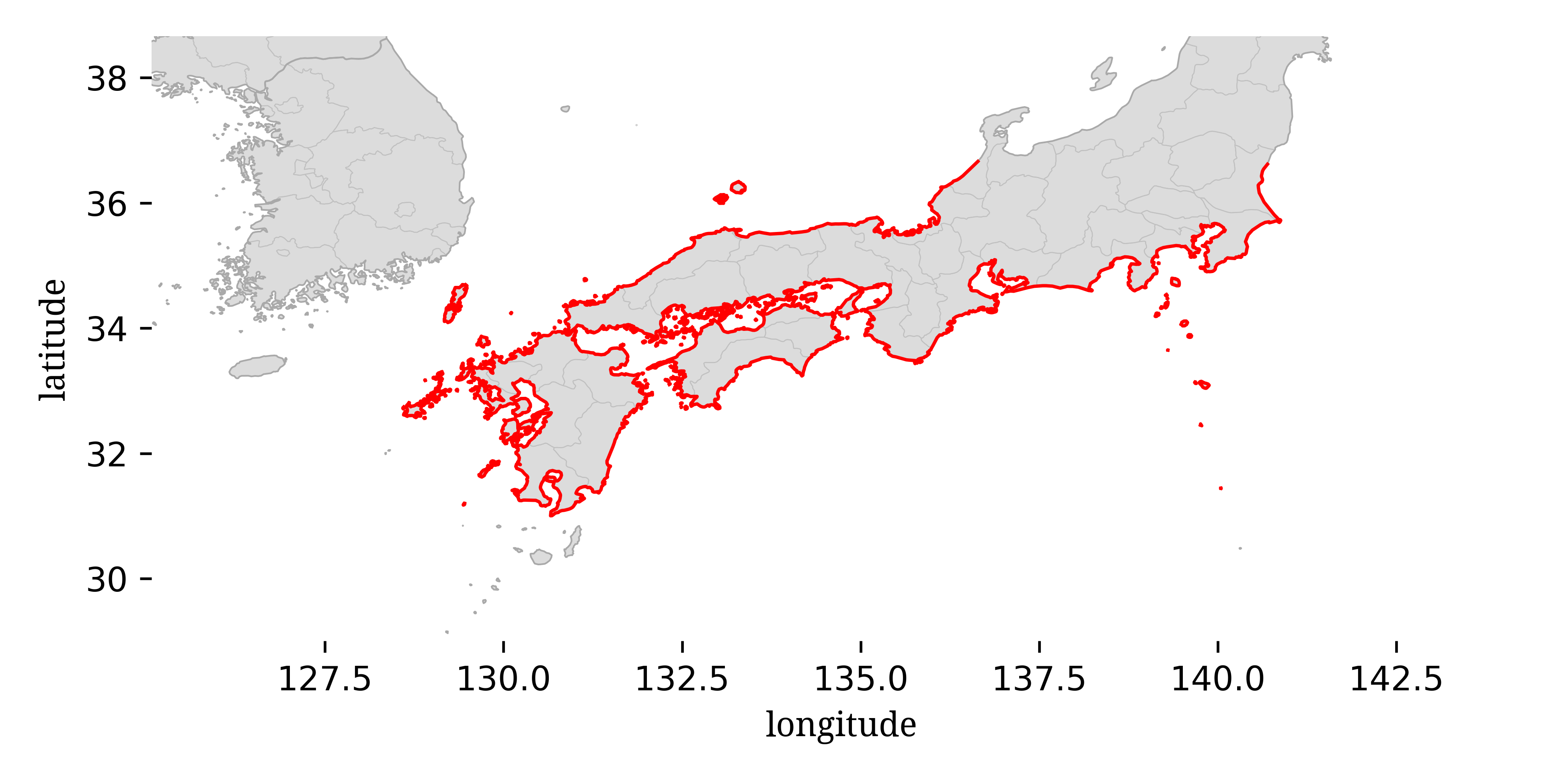
This guide is designed for identification “in the field” where you might be looking at live crabs by eye or through binoculars or from photographs. I will generally try to avoid characters that will require you to physically catch the crab, although I may mention a few for secondary verification. It does not include the more strict taxonomist-style characters that may only be visible under a microscope or via dissection. It is also assumed that the individuals are living, as death (and even capture) can cause dramatic color change.

This is a guide to the fiddler crabs of the main islands of Japan (remote islands are covered in separate guides), which includes five species:
The main island fiddler fauna are dominated by just two species Austruca lactea and Tubuca arcuata, with the other three much rarer.
A number of features can be used to distinguish among these species, but a good place to start is to look at the distance between the base of the eyestalks. Fiddler crabs tend to split into two groups, those with the eyestalks very close together (“narrow front”) and those with the eyestalks separated a bit more (“broad front”). Three of these species (Austruca annulipes, Austruca lactea, and Paraleptuca crassipes) are broad front species, while the other two (Tubuca arcuata and Gelasimus borealis) are narrow front species. Note that the carapace between the eyestalks appears pinched together in the narrow front species, but more trapezoidal in the broad front species.
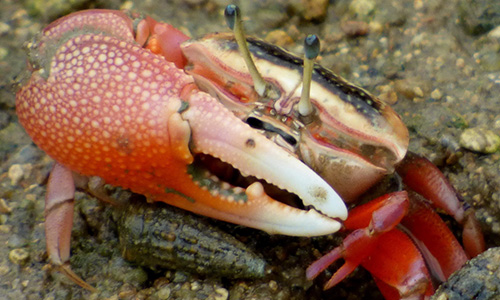
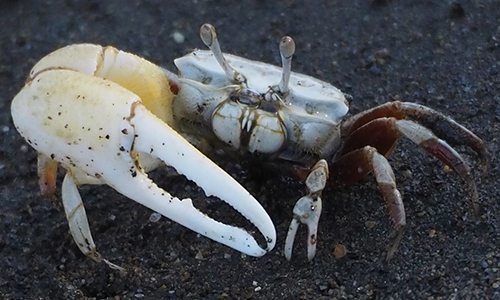
Tubuca arcuata is among the most common fiddler crabs in Japan and the northwestern Pacific. The carapace of Tubuca arcuata is usually a mix of white and black, sometimes red and black, although in some individuals it may appear more solid white, black, or red. The black markings tend to be in large patches, often with a large stripe across the middle of the carapace and a second stripe toward the back of the carapace. The black sections will often appear speckled with the background color. In rarer instances, the white may appear more as a pale blue, particularly in juveniles. They generally have yellowish eyestalks with dark eyes.
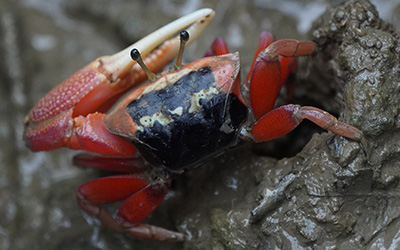

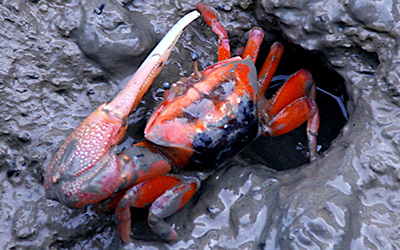

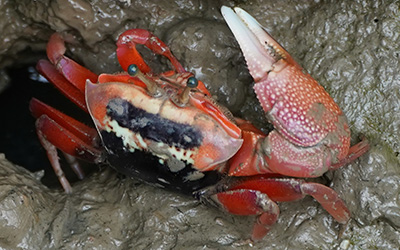
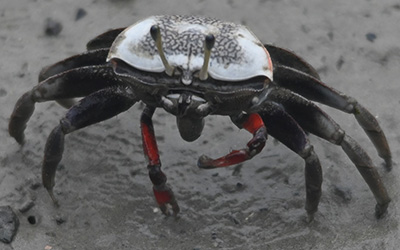
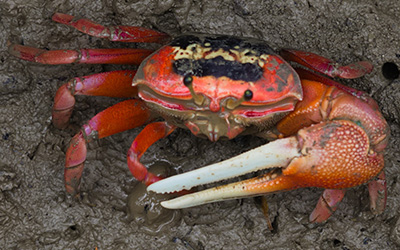
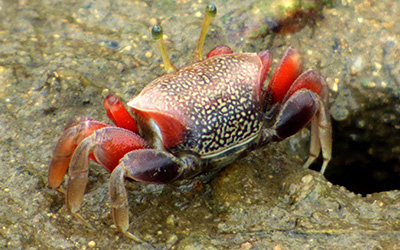
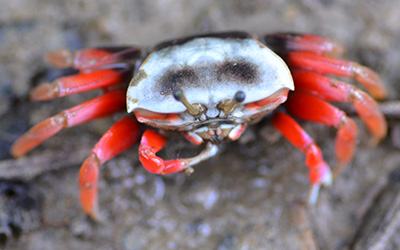
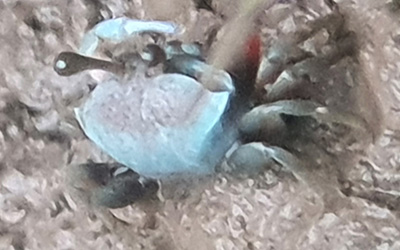
The limbs of Tubuca arcuata are usually red, sometimes black. The large claw is very robust, with distinct bumps on the outside. It is generally red, with white fingers. The fingers are usually distinctly curved and frequently meet with at the tips with flat inner surfaces. There will frequently be a distinct tooth about midway along the lower finger, and occasionally on the upper.
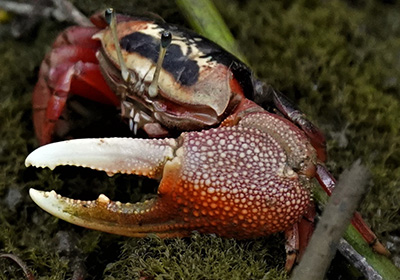
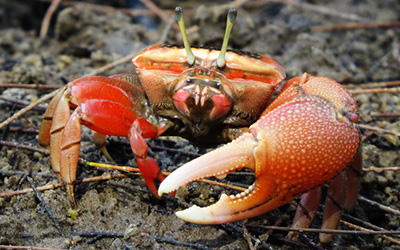
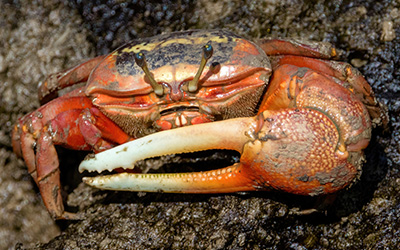
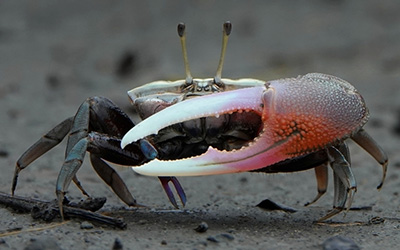
The only other narrow front species on the main islands of Japan, Gelasimus borealis should be easy to distinguish from Tubuca arcuata by both color and claw shape in males.
In Gelasimus borealis the large claw has a distinct shape only found in (most) species of the genus Gelasimus. Specifically, the upper finger tends to be moderately broad, tapering smoothly to a point, while the lower finger will usually curve upwards with a characteristic wave on the inner surface highlighting one to two large teeth. Individuals with regenerating claws will often lack much of this shape, but the claw still looks readily different from other species in the region.
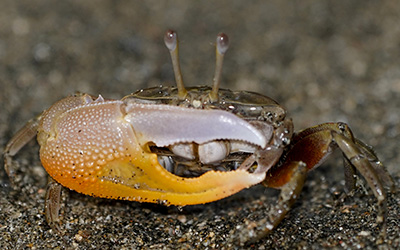
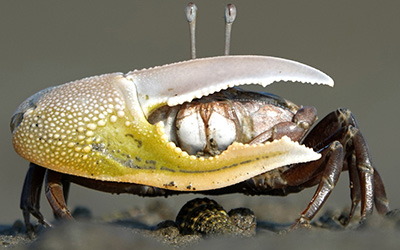
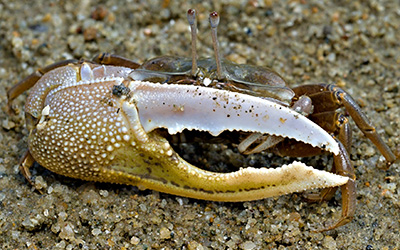
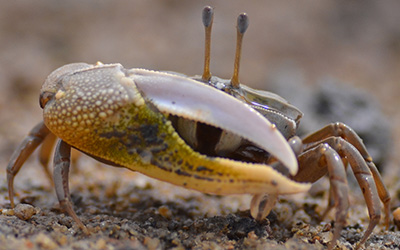
The color of Gelasimus borealis also differs from Tubuca arcuata. The carapace generally appears much more solidly colored or lightly marbled; the color is frequently green or dark brown or white. The lower finger of the claw is typically yellow-green or orange, with the upper finger white or pink. The species entirely lacks the red common to Tubuca arcuata (the orange on the claw will sometimes be reddish).
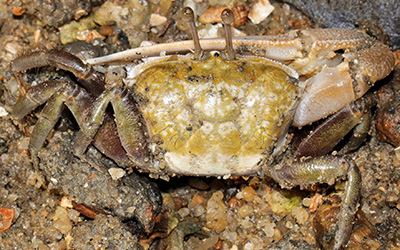
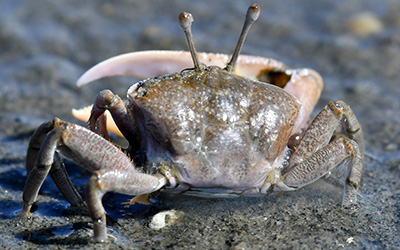
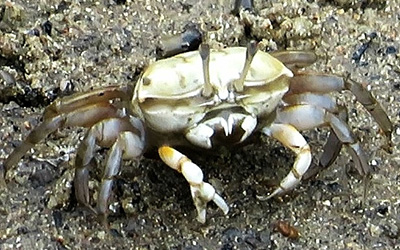
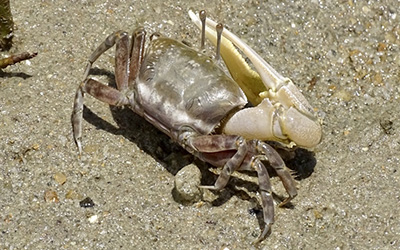
Austruca lactea is the other very common fiddler crab on the main islands of Japan. The carapace of Austruca lactea is generally either white or white with black (dark brown) markings, generally a small scattered speckling of black, frequently with a few thin stripes (kind of like a Rorschach test). In rare occasions the carapace will be more black than white. The legs are generally either white or red (ranging from dark to bright). Eyestalks are generally white or gray. The major cheliped is generally entirely white, or with yellow extending from the arm up into the hand of the claw, but usually still white along the fingers.
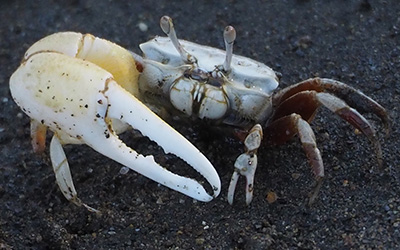

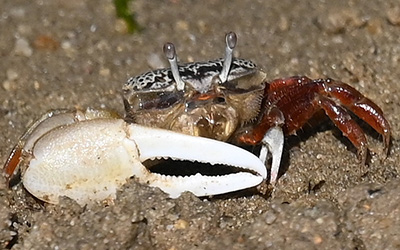
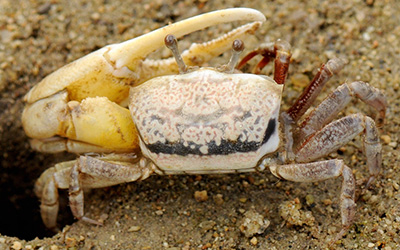

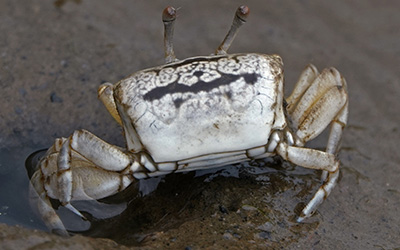
Austruca perplexa is rarely found on the main islands, but can be readily confused with Austruca lactea when it does occur as they can be very similar in appearance.
Austruca perplexa is primarily distinguishable from Austruca lactea by differences in the pattern of the carapace (as well as some very subtle shape differences). Both species have a carapace that is generally black and white. Austruca lactea tends toward having a claw that is mostly white, while Austruca perplexa frequently has a claw that is mostly yellow, but both species can have solid white claws. Austruca lactea will often have dark red legs, while Austruca perplexa rarely does.
The pattern of the black and white pattern on the carapace of the two species has a somewhat subtle difference. Austruca perplexa tends to appear to be more striped, with large, moderately distinct black and white bands, while Austruca lactea tends to be more marbled, without the banding and less distinct boundaries between the colors. On average, Austruca lactea tends toward more white (frequently solid white), while Austruca perplexa tends toward more black (almost never entirely so), but this is not a universal pattern and there is overlap with both species occasionally having entirely white or mostly black carapaces.
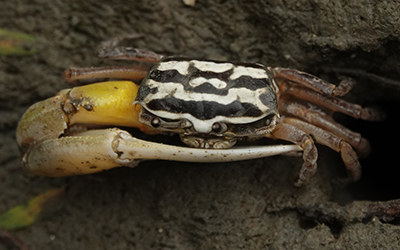

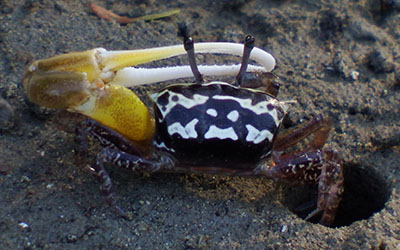
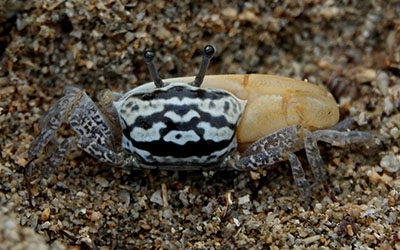
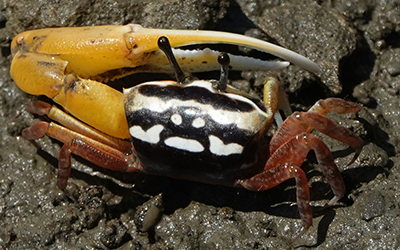
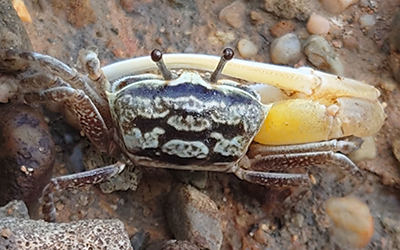
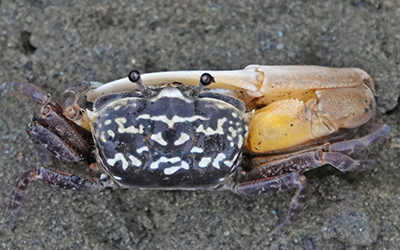
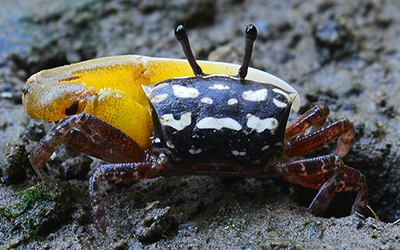
Another subtle difference is in the shape of the front corners of the carapace when seen from above (technically referred to as the anterolateral angles). These corners of the carapace are pointier (the angle is more acute) in Austruca perplexa than Austruca lactea. Compare the apparent sharpness of the front corners of the carapace in the above photos of Austruca perplexa to the more dull corners of Austruca lactea in the set below.
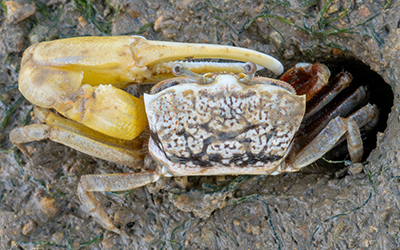
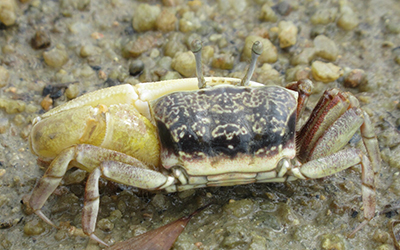
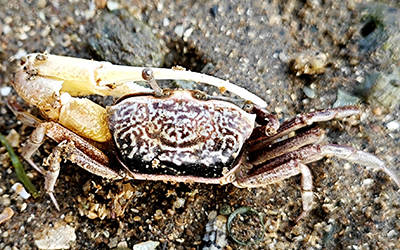
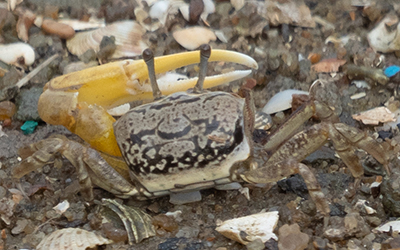
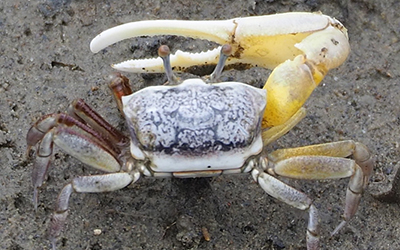
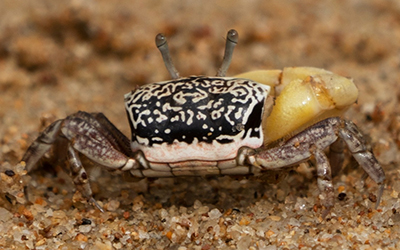
A rare occurrence in the main Japanese islands, Paraleptuca crassipes is easily distinguishable from the other species by color.
Paraleptuca crassipes is a highly variable species with a carapace that is generally some combiantion of black, pale blue, and bright red—occasionally with a hint of yellow or green—with solid red and all-but-solid black carapaces not uncommon (it seems never to be solid blue). It's eyestalks are usually yellow-green, but sometimes red, particularly in individuals with heavily red carapaces. The large claw is bright red-to-reddish pink, with paler pink or white fingers.
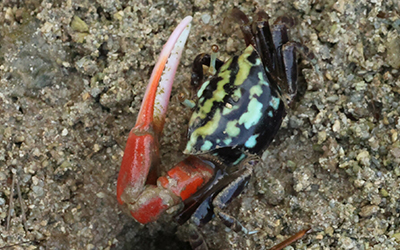
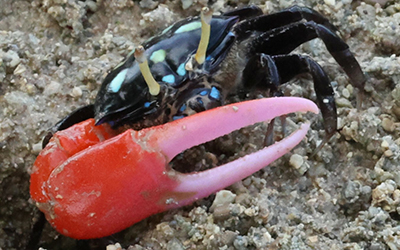
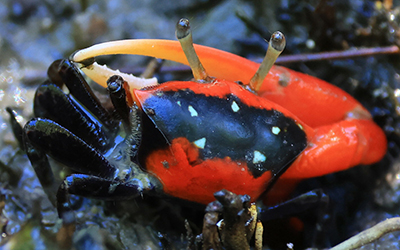
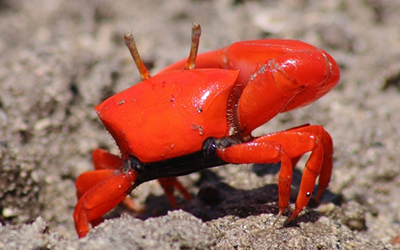
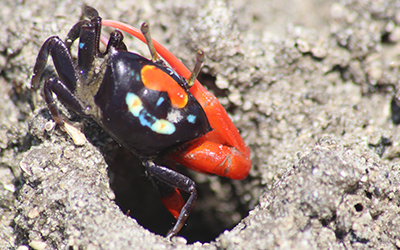
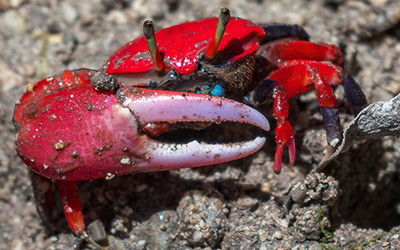
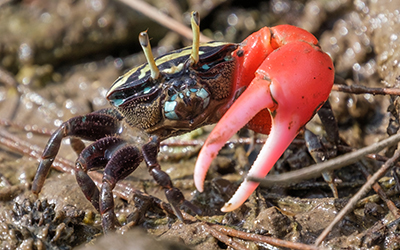

Although the colors are somewhat similar to Tubuca arcuata, the patterns are very different and the narrow vs. broad front distinction should allow these species to easily be told apart.